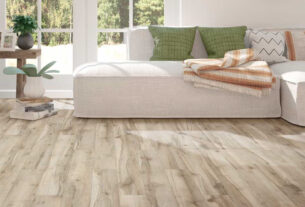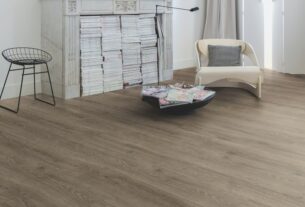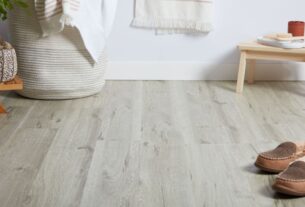Wooden flooring has always been a classic choice for homes, offering both elegance and durability. However, as homeowners become increasingly aware of environmental issues, the demand for eco-friendly Wooden flooring Dubai options has surged. If you’re considering wooden floors for your home, opting for sustainable choices can contribute to a healthier planet while maintaining your home’s aesthetic appeal.
This blog will guide you on how to choose eco-friendly wooden flooring for your home, from understanding the materials to making the right choices for your specific needs.
Why Choose Eco-Friendly Wooden Flooring?
The decision to choose eco-friendly wooden flooring goes beyond the aesthetic appeal and the quality of the materials. Eco-friendly wood flooring helps to reduce the carbon footprint, supports sustainable forests, and can even enhance your home’s indoor air quality. With an increasing number of sustainable wood flooring options available, it’s easier than ever to make an environmentally conscious choice without compromising on style.
Look for Certified Sustainable Wood
One of the most important factors in choosing eco-friendly wooden flooring is sourcing the material from certified sustainable forests. These forests are managed responsibly to ensure that they are being replenished and preserved for future generations. Several certifications and labels help you identify sustainable sources:
- FSC (Forest Stewardship Council): The FSC certification ensures that the wood has been sourced from forests that meet rigorous environmental and social standards.
- PEFC (Program for the Endorsement of Forest Certification): This certification is another mark of sustainability, ensuring that the forests from which the wood is sourced are managed sustainably.
When shopping for wooden flooring, always look for the FSC or PEFC logo, which guarantees that the wood you’re purchasing comes from a responsibly managed forest. Choosing certified sustainable wood helps you contribute to forest conservation, wildlife preservation, and responsible land management.
Consider Reclaimed and Recycled Wood
Another fantastic way to reduce your environmental impact is to choose reclaimed or recycled wood flooring. Reclaimed wood is sourced from old buildings, barns, factories, or even fallen trees, which means that no new trees are cut down to make the flooring. This type of flooring is highly sustainable, as it reduces waste and gives old materials a new life.
Recycled wood comes from various sources, including previous flooring projects, furniture, or wood debris. By reusing wood that has already been processed, you’re reducing the demand for newly harvested timber, conserving resources, and preventing the need to dispose of usable materials in landfills.
Incorporating reclaimed or recycled wood flooring into your home is not only a sustainable choice, but it also offers unique character and charm, adding a rustic or vintage feel to your living space.
Opt for Low-VOC or No-VOC Finishes
While choosing sustainable wood is essential, it’s equally important to consider the finishes used to treat your wooden floors. Many conventional finishes contain harmful chemicals known as volatile organic compounds (VOCs), which can negatively affect both the environment and your health.
Low-VOC or no-VOC finishes are available, which significantly reduce the amount of harmful chemicals released into the air. These finishes are better for indoor air quality, especially in homes with children or those sensitive to chemical exposure. Additionally, low-VOC finishes have less environmental impact since they don’t contribute to air pollution or require harmful chemicals in their production.
When selecting your wood finish, make sure to ask the supplier about VOC levels, and opt for finishes that are labeled as low-VOC or eco-friendly. This simple change can make a big difference in both your home’s health and the environment.
Consider the Durability and Longevity of the Wood
Sustainability is not just about where the wood comes from, but also how long it will last. Choosing high-quality wooden flooring that is durable and can withstand wear and tear will minimize the need for replacements and reduce waste in the long term. Look for hardwood species like oak, maple, or hickory that are naturally strong and resilient.
Another option is engineered wood flooring, which uses a thin layer of real hardwood over a plywood core. Engineered wood flooring is often more durable and stable than traditional solid wood, especially in areas with fluctuating temperatures and humidity. Since engineered wood is typically made with smaller pieces of wood, it’s a more efficient use of timber, making it a more sustainable choice compared to solid hardwood.
Choose Local Wood Species
Transporting wood across long distances not only increases the carbon footprint of the product but also leads to additional costs and environmental impact. To reduce this, consider opting for locally sourced wood species that don’t require extensive transportation. For instance, hardwoods like walnut, oak, and maple may be available locally in your region, allowing you to enjoy eco-friendly flooring without the added environmental cost of shipping products from overseas.
By supporting local manufacturers and choosing locally sourced materials, you also contribute to the local economy, creating a more sustainable, self-sufficient supply chain.
Maintain Your Wooden Floors to Ensure Longevity
The longer your wooden floors last, the less waste you create. Regular maintenance of your wooden floors can help preserve their appearance and durability for years to come. Avoid harsh chemicals when cleaning, as they can damage the wood and the finish. Instead, use gentle, eco-friendly cleaners and a soft cloth or mop.
Re-oiling or refinishing the floor periodically will also keep the wood looking great without the need for replacement. By taking care of your wooden floors, you ensure they remain in excellent condition and don’t end up in landfills prematurely.
Look for Brands Committed to Sustainability
Finally, choose brands and suppliers that have a clear commitment to sustainability. Many manufacturers are now producing wooden flooring with sustainability in mind. From sourcing wood from certified forests to offering recyclable products, these companies prioritize environmental responsibility in their manufacturing processes.
Take the time to research different suppliers and manufacturers. Look for companies that use eco-friendly practices, like reducing waste, minimizing energy consumption, and using sustainable materials in their production lines.
Conclusion
Choosing eco-friendly wooden flooring Dubai for your home is not only a stylish and functional choice but also an important step in reducing your environmental impact. By considering certified sustainable wood, opting for reclaimed or recycled materials, and selecting low-VOC finishes, you can make an environmentally responsible choice without sacrificing style or quality.
Remember, sustainability in home design is all about long-term thinking—choosing durable materials, supporting local suppliers, and maintaining your floors to extend their lifespan. With a little thought and research, you can enjoy the beauty and warmth of wooden flooring while making a positive impact on the planet.





